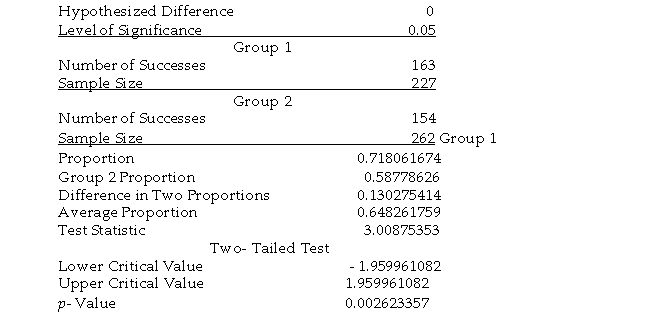The following EXCEL output contains the results of a test to determine if the proportions of satisfied guests at two resorts are the same or different.

-Referring to Table 10-10, allowing for 0.75% probability of committing a Type I error, what are the decision and conclusion on testing whether there is any difference in the proportions of satisfied guests in the two resorts?
Definitions:
Q7: George agreed to pay his son Luke
Q13: The most important type of agency that
Q17: A company is a separate legal entity.This
Q19: Which of the following statements is not
Q25: Most Australian employees have their pay and
Q50: Referring to Table 13-12, there is sufficient
Q53: Referring to Table 12-15, the critical value
Q92: Referring to Table 12-4, what is the
Q110: The Human Resources Director of a large
Q117: Referring to Table 10-12, construct a 90%